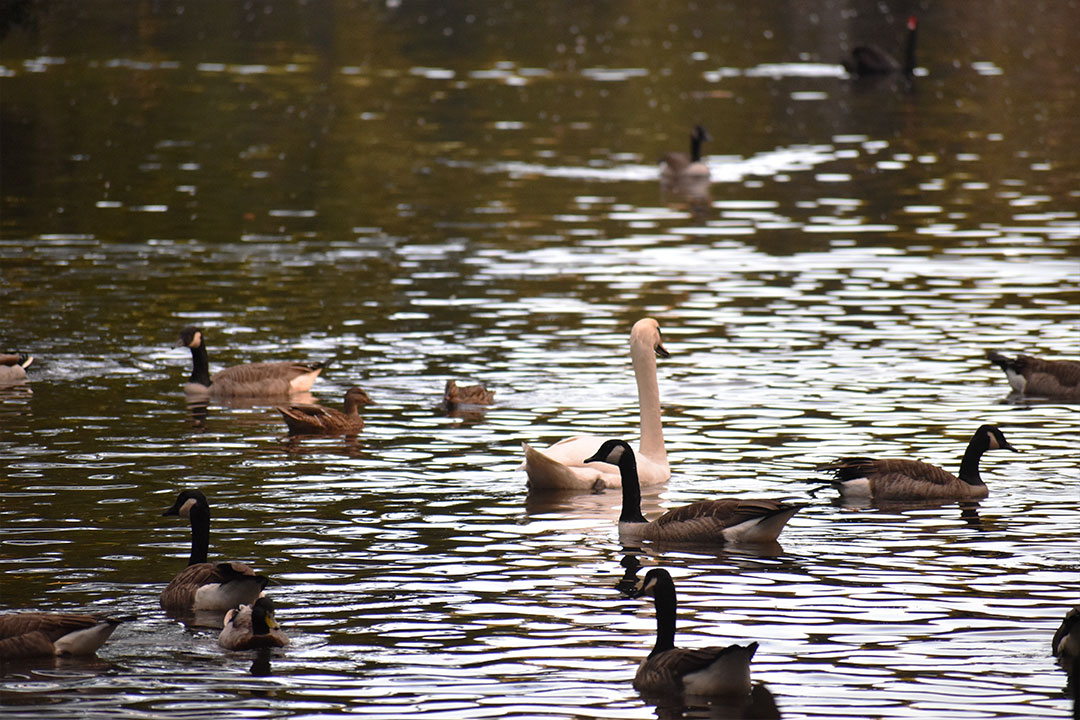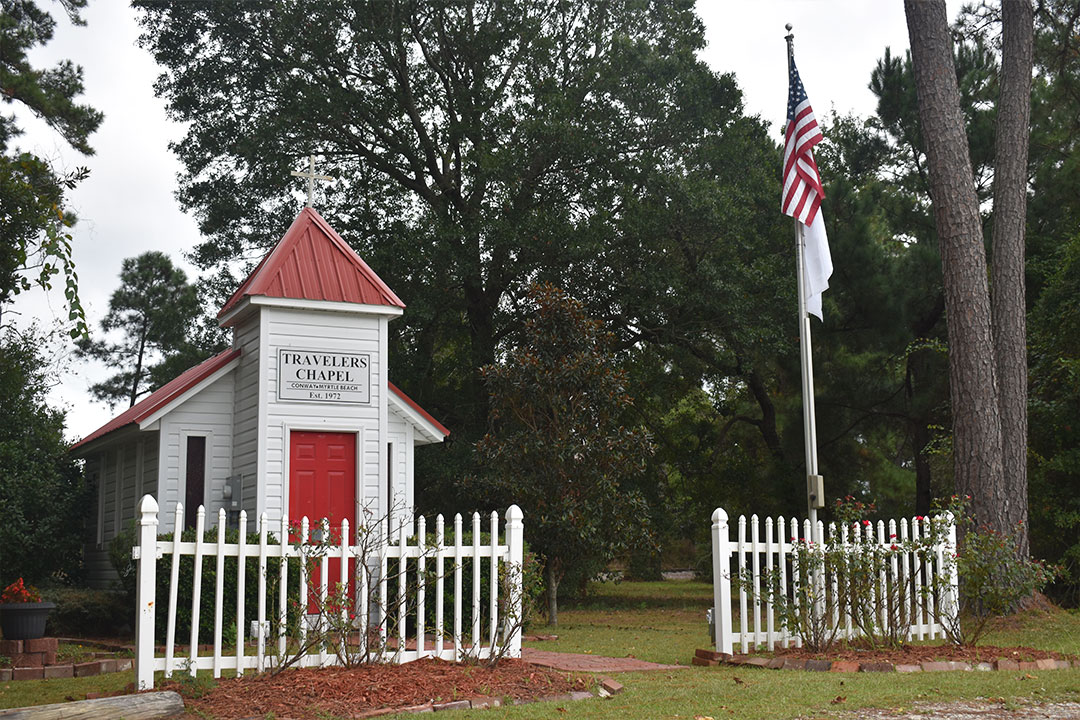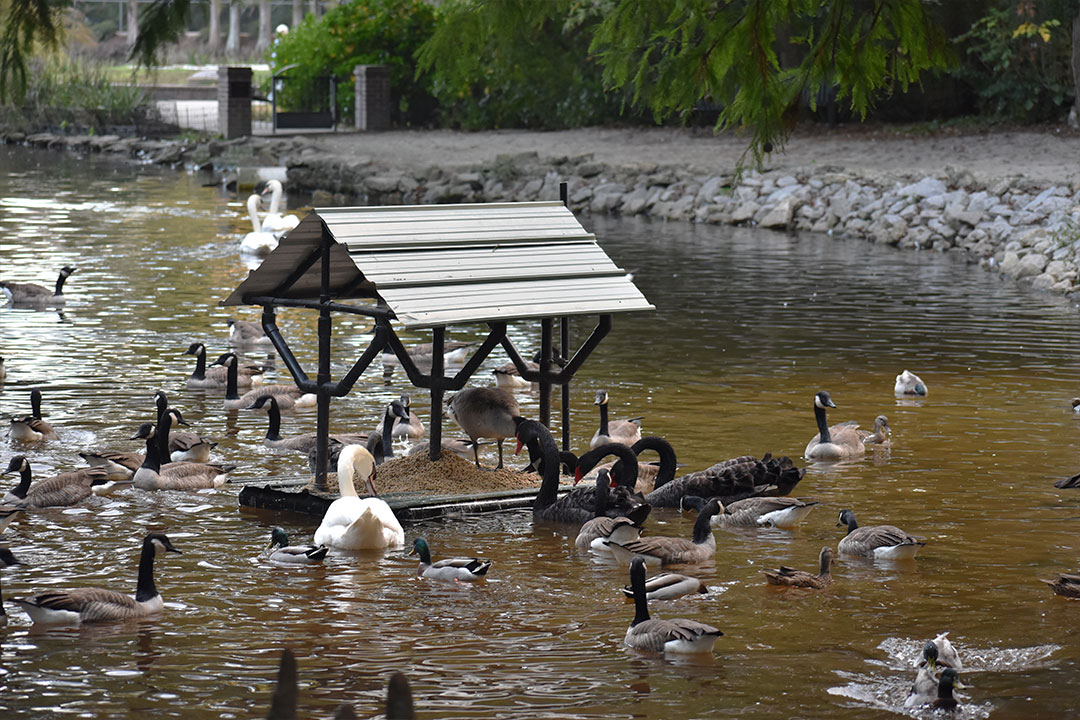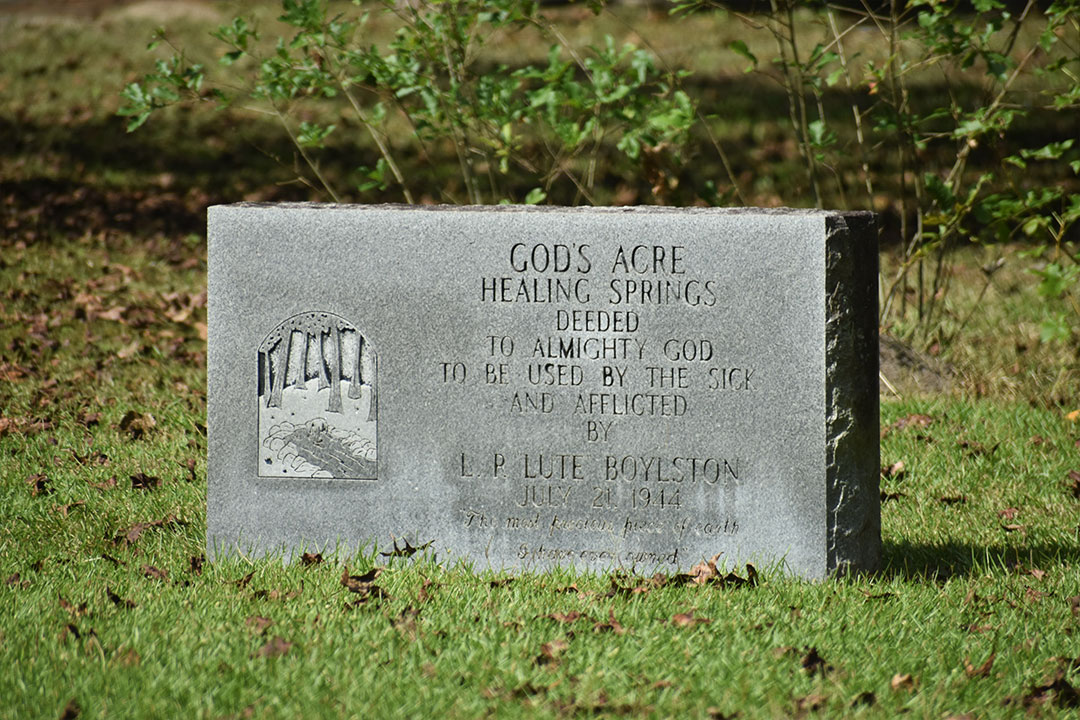Stretching from the Atlantic Ocean to the Blue Ridge mountains and rich in history, the state of South Carolina has a lot to offer. With 47 state parks on over 90,000 acres and millions of tourists frequenting coastal areas every year, there’s never a shortage of things to do. But there are hidden gems nestled among the larger, more prominent landmarks. Carolina News & Reporter went on a ramble through the state to uncover some of these special places.
Swan Lake Iris Gardens
 Photos by Ashton Van Ness
Photos by Ashton Van Ness
The Swan Lake Iris Gardens are located in Sumter, South Carolina. It is currently the only public park in the United States to boast all species of swans. The park is large, with many walking trails around the lake and through the gardens. On a recent day, most visitors were families bringing children to look at the swans, but there were also a lot of people exercising on the trails around the park. There were an incredible number of different swans, geese, and ducks in and around the lake. I saw lots of mallards and Canadian geese, as well as mute swans and black Australian swans. The gardens showcase a wide variety of flowers, including over 120 varieties of iris, along with azaleas and daylilies and a few statues here and there. The park is free to the public and open daily 7:30 a.m. to dusk. The visitor center is open daily 8:30 a.m.- 5 p.m. and offers tours, maps, and a shop. For a less crowded park, I would suggest visiting on a weekday in the morning hours.
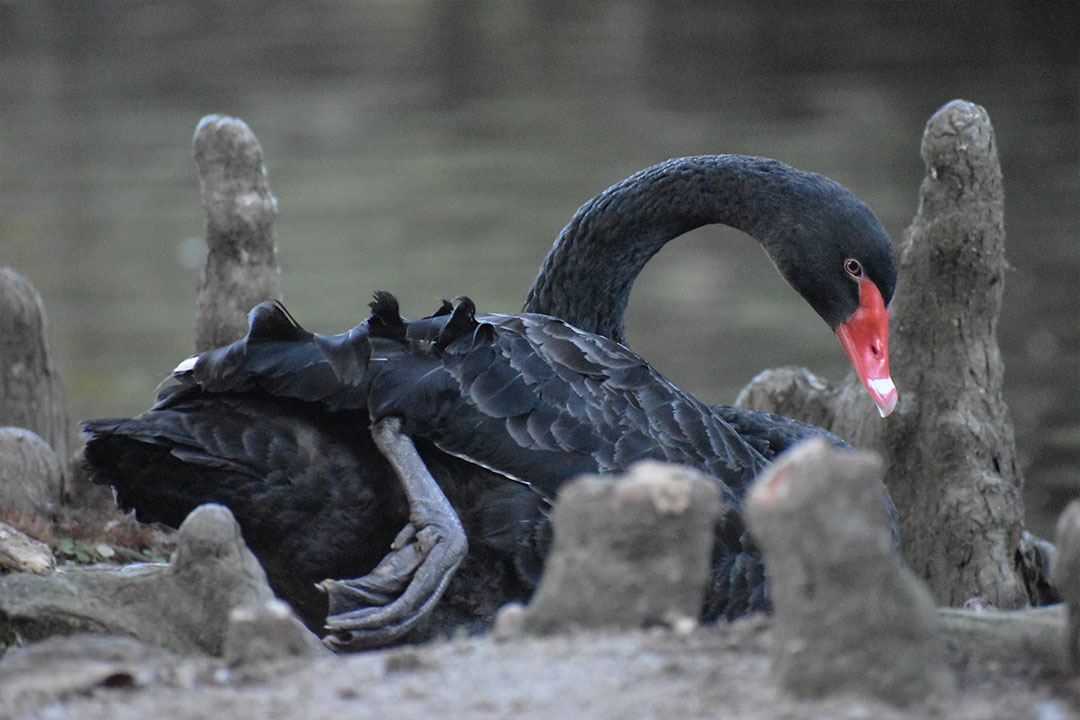 A black Australian swan resting at the edge of the water.
A black Australian swan resting at the edge of the water.
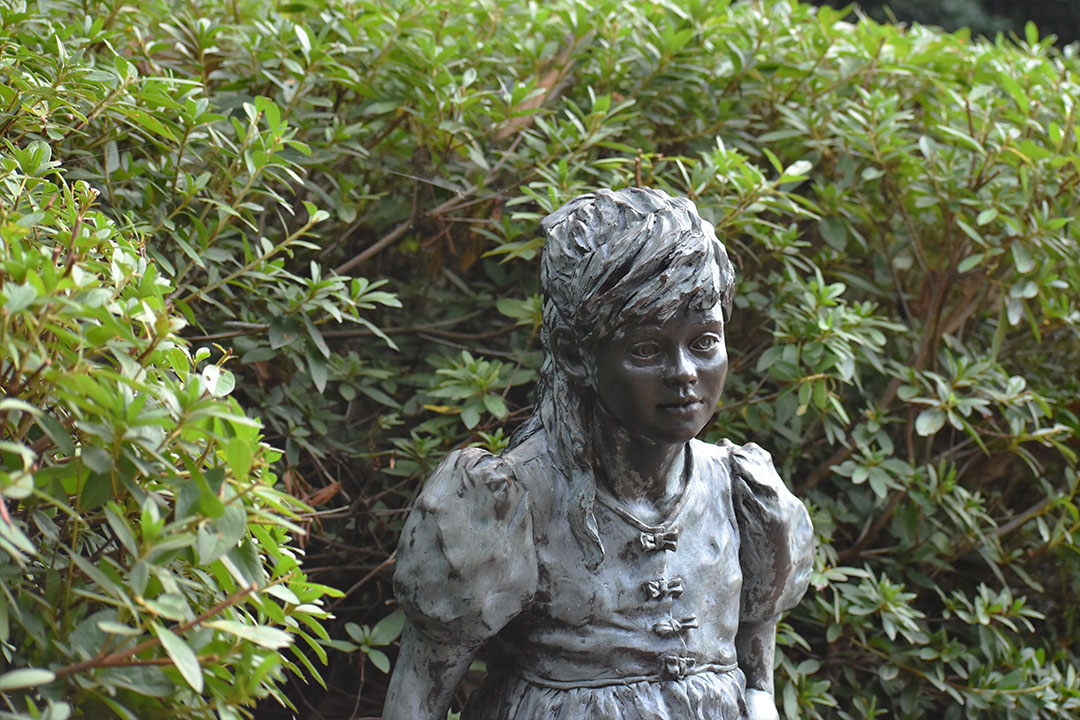 A statue of a young girl along one of the many paths in the park.
A statue of a young girl along one of the many paths in the park.
 The Swan Lake Iris Gardens are located at 822 Liberty W St. in Sumter, South Carolina.
The Swan Lake Iris Gardens are located at 822 Liberty W St. in Sumter, South Carolina.
Governor’s Mansion Gardens

The Governor’s Mansion gardens are located in downtown Columbia. The gardens are open to the public 9 a.m. -5 p.m. daily, as long as there aren’t any private events taking place. There are small paths that lead visitors through the gardens and around the Lace House, the official guest house of the Governor’s Mansion. The garden is very green, featuring many boxwood beds, and around almost every corner you find a different fountain. There are many benches throughout the garden for people to sit and take a quiet moment to hear the birds chirping in the magnolia trees. Parents were walking around with their children, and there were also a few groups of people doing photoshoots in the picturesque setting. I would suggest visiting in the morning or right before close when the birds are most active and the sun isn’t as high. Spring is ideal if you want to see the flowers in full bloom, but fall is also beautiful when the weather starts to cool down. There is metered parking along Lincoln Street for visitors who can enter the garden through a small open pedestrian gate to the right of the large main gate. Tours of the Governor’s mansion and the grounds are offered Tuesdays, Wednesdays, and Thursdays and can be booked on its website.
 A bird house replica of the Cardwell-Boylston house, one of the houses on the Governor’s Mansion grounds.
A bird house replica of the Cardwell-Boylston house, one of the houses on the Governor’s Mansion grounds.
 The gardens are available for people to hold functions, such as weddings, year-round.
The gardens are available for people to hold functions, such as weddings, year-round.
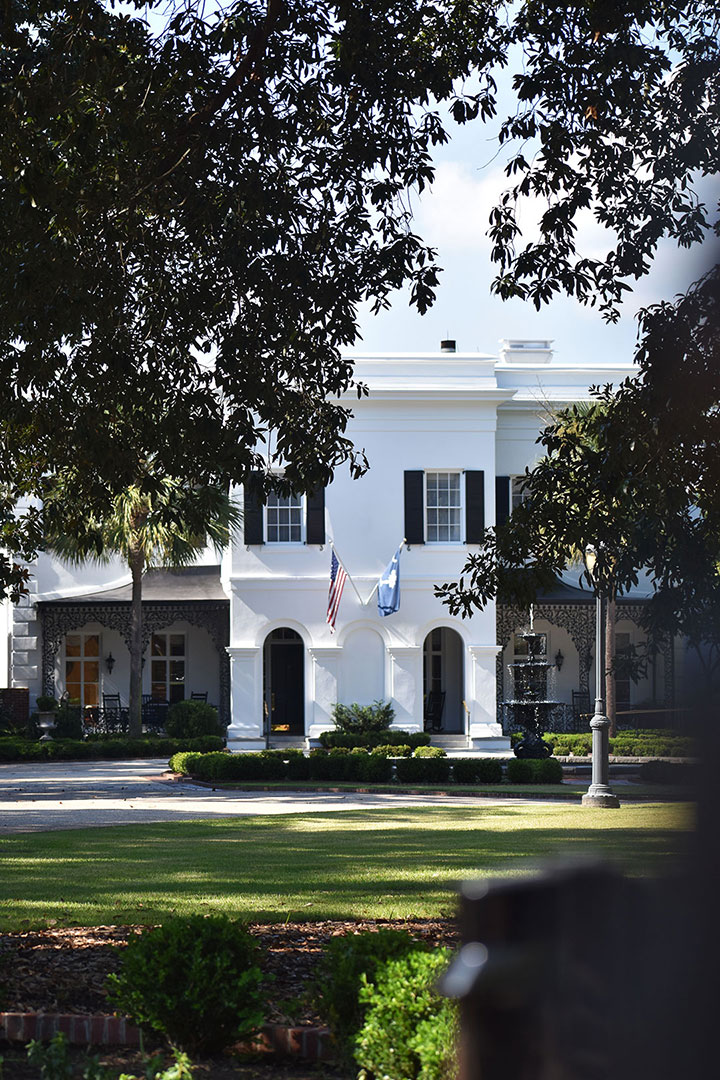 The Governor’s Mansion was originally built in 1855 as a home for officers of the Arsenal Military Academy. It became the home for South Carolina governors in 1868.
The Governor’s Mansion was originally built in 1855 as a home for officers of the Arsenal Military Academy. It became the home for South Carolina governors in 1868.
 The Governor’s Mansion gardens are located at 800 Richland St. in Columbia.
The Governor’s Mansion gardens are located at 800 Richland St. in Columbia.
Upper Room Chapel
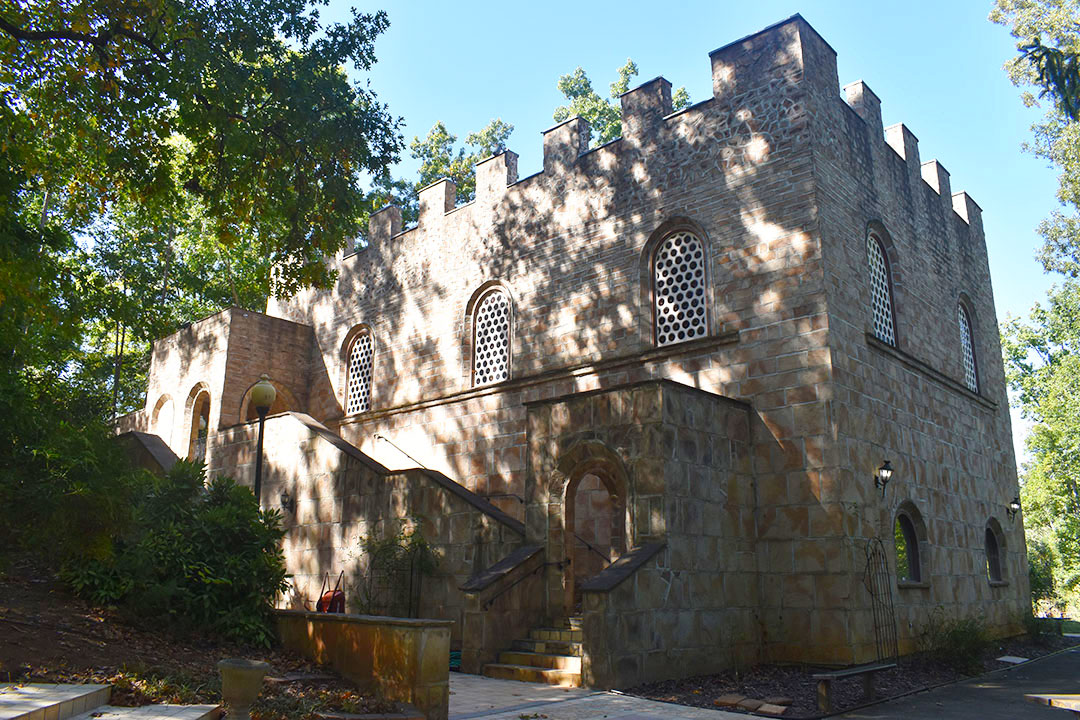
The Upper Room Chapel can be found just south of Charlotte, North Carolina, in Fort Mill, South Carolina. The chapel was created to be an almost-identical replica of Jerusalem’s Upper Room, where Christ’s Last Supper was held. It was originally built as part of Heritage USA, a Christian theme park that closed in 1989. The Upper Room Chapel sat vacant for almost 20 years when Heritage USA closed. It was at risk of being demolished until James Russell, a Christian concert promoter, purchased the property in 2010 and opened the chapel to the public in 2011. The inside of the chapel was closed when I visited, but there is a 24/7 livestream of the inside on the chapel’s website, as well as hours of when the chapel is open to the public.
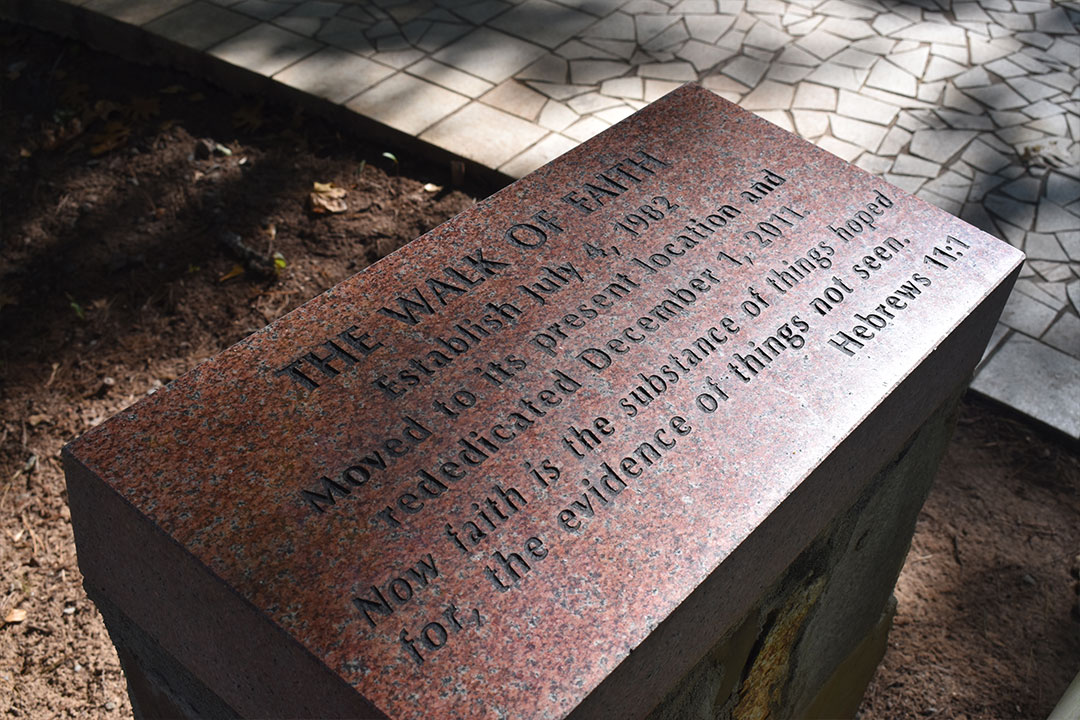 Visitors can walk around the outside of the chapel, on the “Walk of Faith,” at any time of day, even when the chapel is closed.
Visitors can walk around the outside of the chapel, on the “Walk of Faith,” at any time of day, even when the chapel is closed.
 The chapel relies on donations and volunteers to stay up and running. Upper Room Chapel is located at 8409 Regent Parkway in Fort Mill, South Carolina.
The chapel relies on donations and volunteers to stay up and running. Upper Room Chapel is located at 8409 Regent Parkway in Fort Mill, South Carolina.
Angel Oak

The Angel Oak tree is located about 30 minutes from downtown Charleston, South Carolina. The tree is supposedly around 400 to 500 years old, although the number is debated and some think it is much older. It is considered one of the oldest oak trees on the East Coast. The tree is 65 feet tall and has a circumference of 28 feet. As the tree grew, its branches grew out and downward and now cover a large area with shade. The Angel Oak has weathered many hurricanes and was severely damaged by Hurricane Hugo in 1989 but recovered. The park is open 9 a.m.-5 p.m. every day except Wednesdays (1 p.m.-5 p.m. on Sundays), and the park is free to the public. There is a gift shop with souvenirs on the premises. Parking is free but can be challenging when it gets busy. Access to the Angel Oak park is by a fairly narrow dirt road. The road widens to the right of the park just enough for about 15-20 cars to pull into unmarked parking spots. Once those are full, people parallel park on the sides of the road at the wider sections. Visiting on a weekday in the morning hours would be best for avoiding crowds and difficult parking situations.
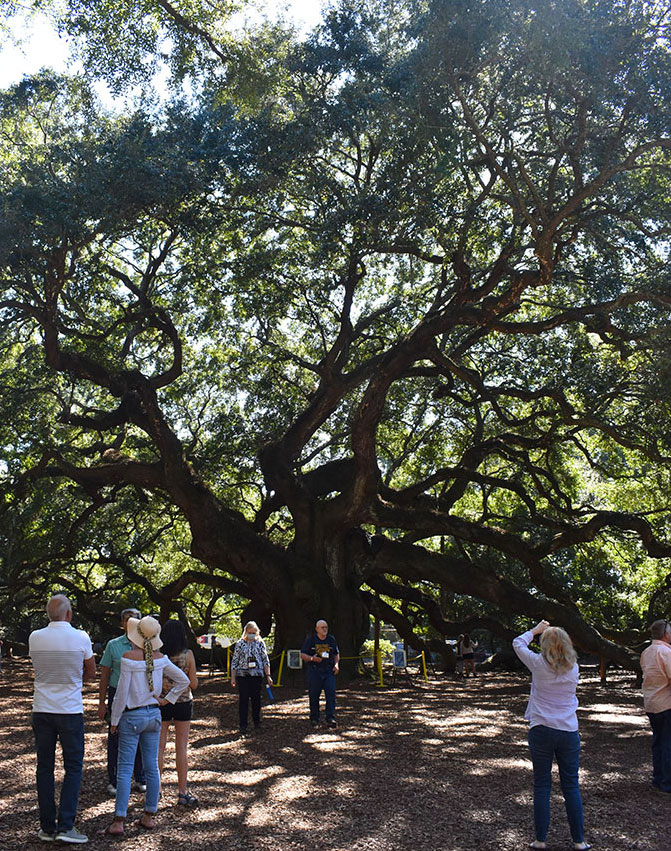 Some of the larger low hanging branches on the tree have had support beams placed under them. Guests can visit the Angel Oak at 3688 Angel Oak Rd. in Charleston.
Some of the larger low hanging branches on the tree have had support beams placed under them. Guests can visit the Angel Oak at 3688 Angel Oak Rd. in Charleston.
Traveler’s Chapel
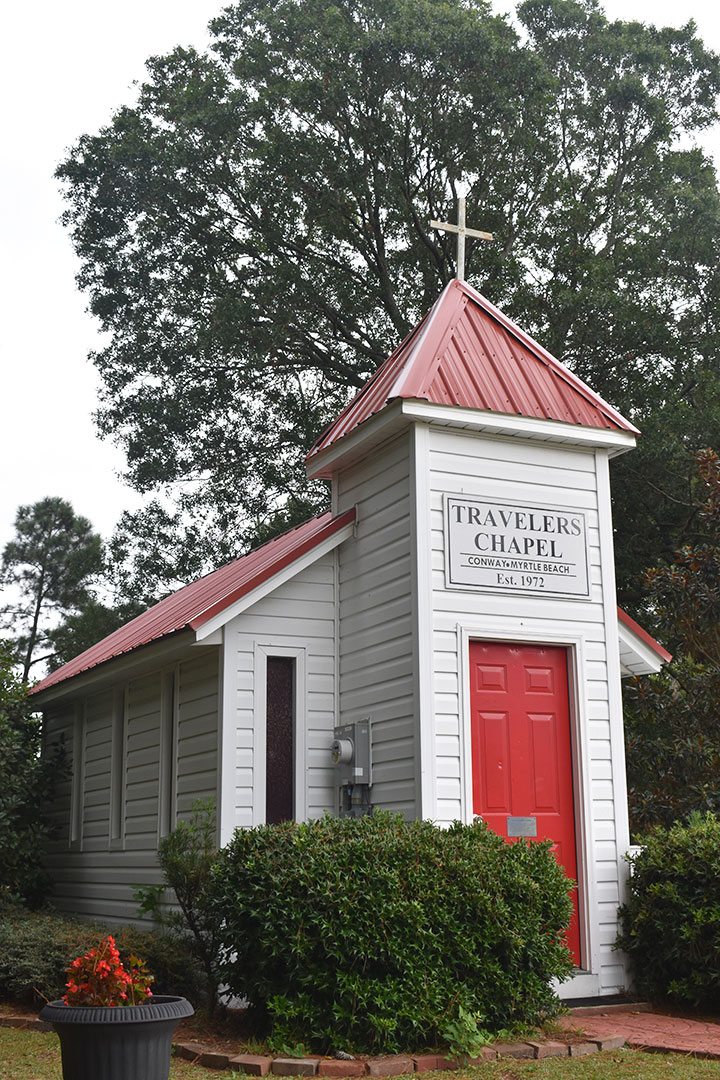
The Traveler’s Chapel is located off of U.S. Highway 501 in Conway, South Carolina. It is one of the smallest chapels in the United States and can seat only twelve people. The entire building is only 12-by-24 feet. Weekly services are not held at the chapel, but people may visit anytime. There is a guest book at the altar for guests to sign and leave a note. The chapel was built in 1972 and upkeep of the chapel is funded by donations from the community. U.S. Highway 501 is a busy highway with many stores and restaurants along both sides which makes this little chapel very easy to miss, so I would suggest making sure you have the address in a GPS. The parking lot is tiny, so going on a weekday would be beneficial.
 Many small weddings have taken place at the Traveler’s Chapel over the years. The inside of the chapel features only six small pews that can seat around twelve people. Guests can find the chapel at 1705 US-501 in Conway, South Carolina.
Many small weddings have taken place at the Traveler’s Chapel over the years. The inside of the chapel features only six small pews that can seat around twelve people. Guests can find the chapel at 1705 US-501 in Conway, South Carolina.
French Huguenot Church and St. Philip’s Church
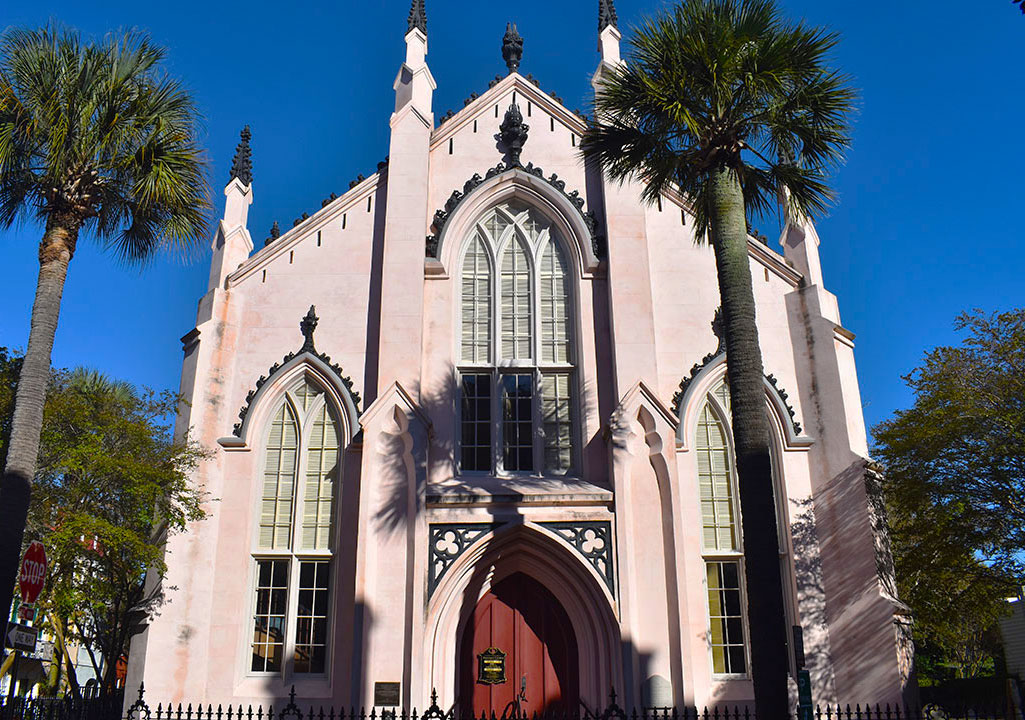
Often called the “Holy City,” Charleston, South Carolina, is home to over 400 churches. Any picture of the downtown Charleston skyline will boast a church steeple. Known for its religious tolerance, people came to Charleston to safely practice their beliefs. Although they all are deserving of a visit, two churches I recommend are St. Philip’s Church and the French Huguenot Church. St. Philip’s Church is the oldest congregation in the country south of Virginia. Many notable people are buried at St. Philip’s Church, including John C. Calhoun, Charles Pinckney and Edward Rutledge. John C. Calhoun was the seventh Vice President of the United States. Charles Pinckney was a signer of the U.S. Constitution, and Edward Rutledge was the youngest person to sign the U.S. Declaration of Independence. The French Huguenot Church is built in a Gothic revival style, and it is the oldest gothic revival style church in South Carolina. It is currently the only independent Huguenot Church in the United States. The history behind both of these churches is extensive and interesting, but the churches are also beautiful to look at and explore. These two churches happen to be just a few blocks from each other. Parking can be difficult to find in downtown Charleston, and it can be tricky to navigate due to the many one-way streets, so I recommend parking at one of the many parking garages and walking to the places you want to visit.
 The French Huguenot church has a graveyard that flanks both sides of the church.
The French Huguenot church has a graveyard that flanks both sides of the church.
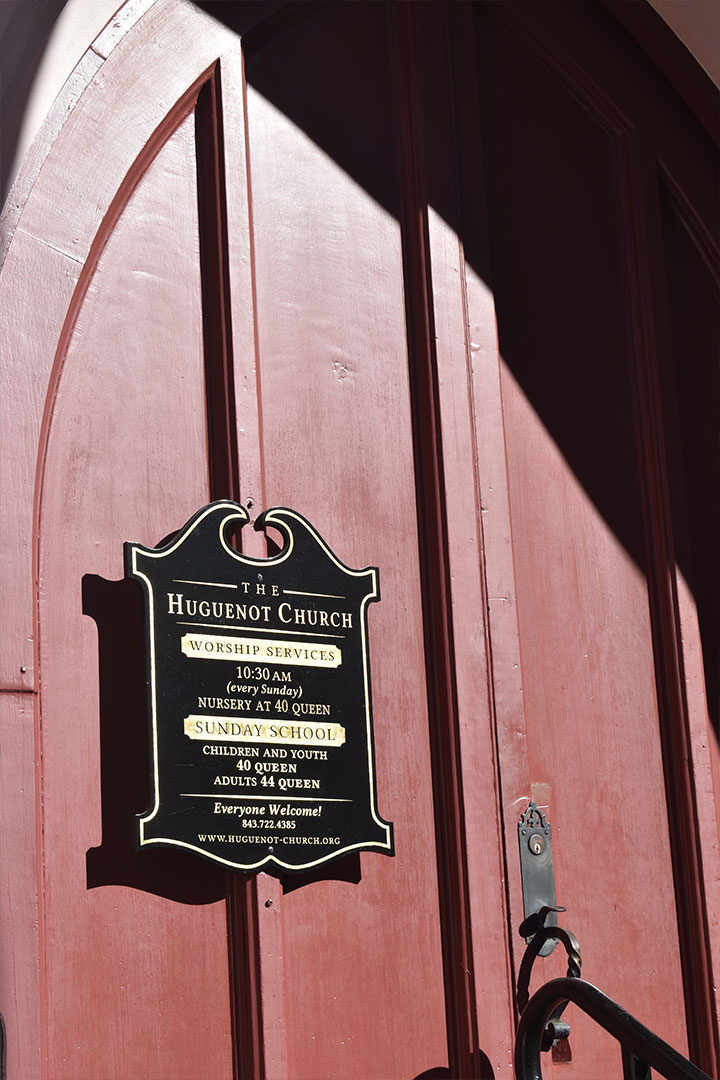 The French Huguenot church can be found at 136 Church St. in Charleston.
The French Huguenot church can be found at 136 Church St. in Charleston.
 Many influential people, such as John Wesley and George Whitefield, have preached at St. Philip’s church.
Many influential people, such as John Wesley and George Whitefield, have preached at St. Philip’s church.
 St. Philip’s Church is located at 142 Church St. in Charleston.
St. Philip’s Church is located at 142 Church St. in Charleston.
God’s Acre Healing Springs
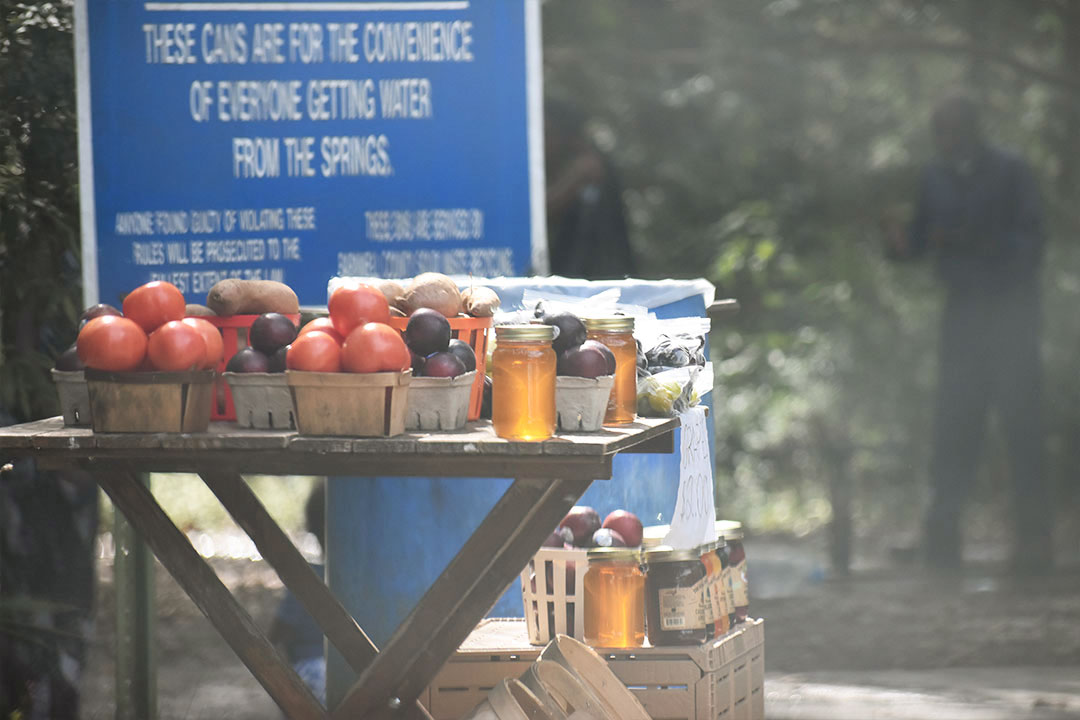
God’s Acre Healing Springs are located in Blackville, South Carolina, about an hour drive from Columbia and a two-hour drive from Charleston. The springs were said to have been considered sacred to Native Americans who originally occupied the area. They believed the springs had healing powers. Over the years, the land changed hands many times before eventually being acquired by L.P. Boylston. In 1944, Boylston deeded the land to God. The springs are located behind a church, and travelers can follow a small paved road that loops around the church to a parking lot. There is a grassy area to the left side of the parking lot, and the springs are to the right, about a 10-step walk from the parked cars. There are spigots with a never-ending flow of water placed around for people to easily fill up bottles. When I visited on a Thursday afternoon, there was a consistent wave of people stopping by to fill up large jugs of water. A few people were picnicking nearby, while others dipped their hands in the water that was pooling from the spigots to form a shallow creek. A man set up a stand nearby and was selling items such as vegetables and jams. The longer I stayed the busier it got. By the time I left, there was a line of people holding five-gallon clear jugs waiting for their turn to get water. If waiting isn’t your thing, I would suggest going early in the morning or later at night. The water never stops flowing and is accessible to the public at all hours.
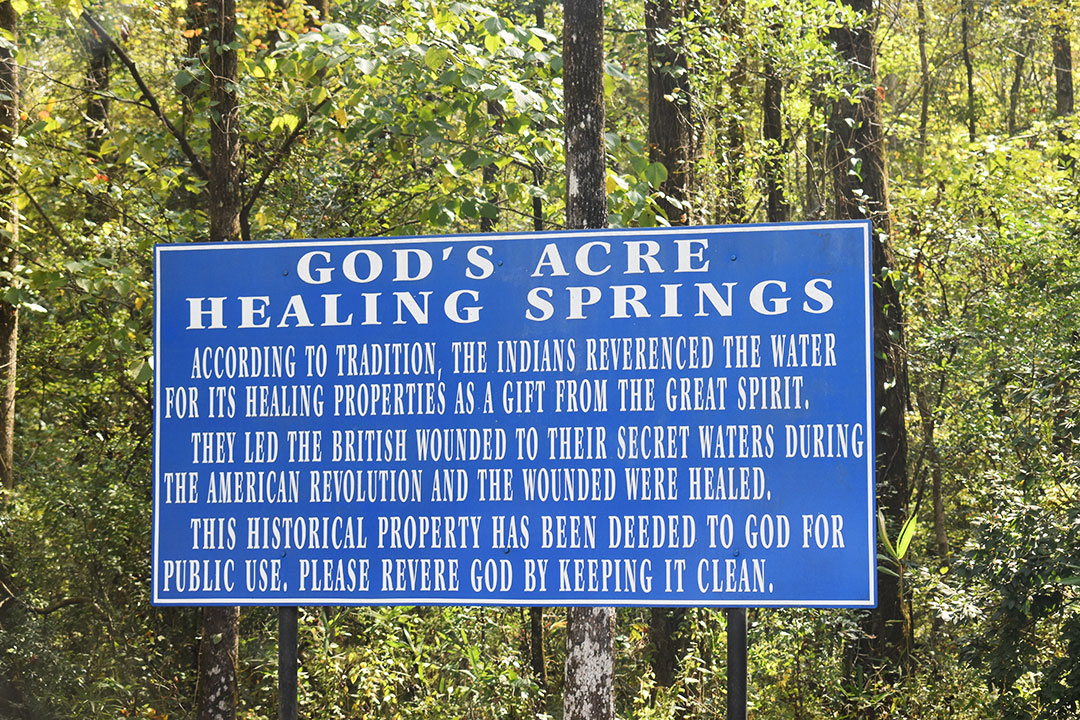 The springs are located at 1-211 Spring Ct. in Blackville, South Carolina.
The springs are located at 1-211 Spring Ct. in Blackville, South Carolina.
Hampton Park

Hampton Park can be found in downtown Charleston, South Carolina, near The Citadel and is one of the largest and oldest parks on the peninsula. The park offers live music on certain evenings during the summer. It has onsite bathrooms along with free parking. Within the park, there are many paths that lead you through flower gardens, across bridges, around ponds and more. Many people were exercising, but there were also parents playing with their kids and people walking their dogs. The park has shaded gazebos and benches scattered throughout for those visiting to relax. This park was very serene and did not seem like it was in the heart of the city. The park is free to the public and is open dawn to dusk.
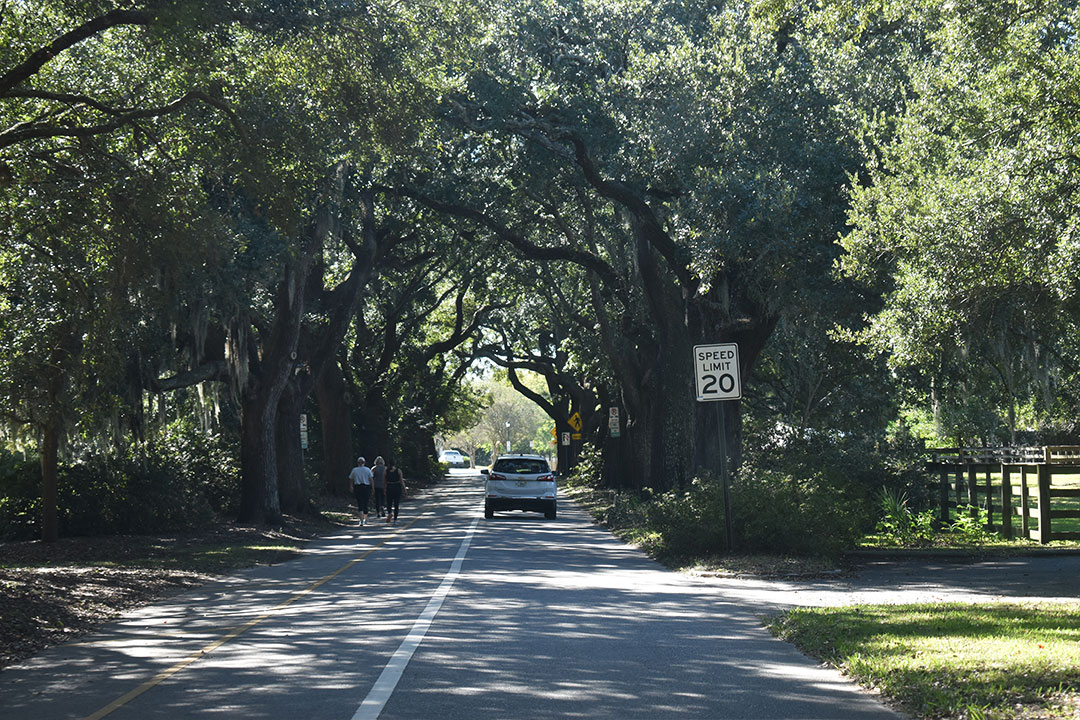 The road, complete with a bike and walking lane, does a full loop around the park.
The road, complete with a bike and walking lane, does a full loop around the park.
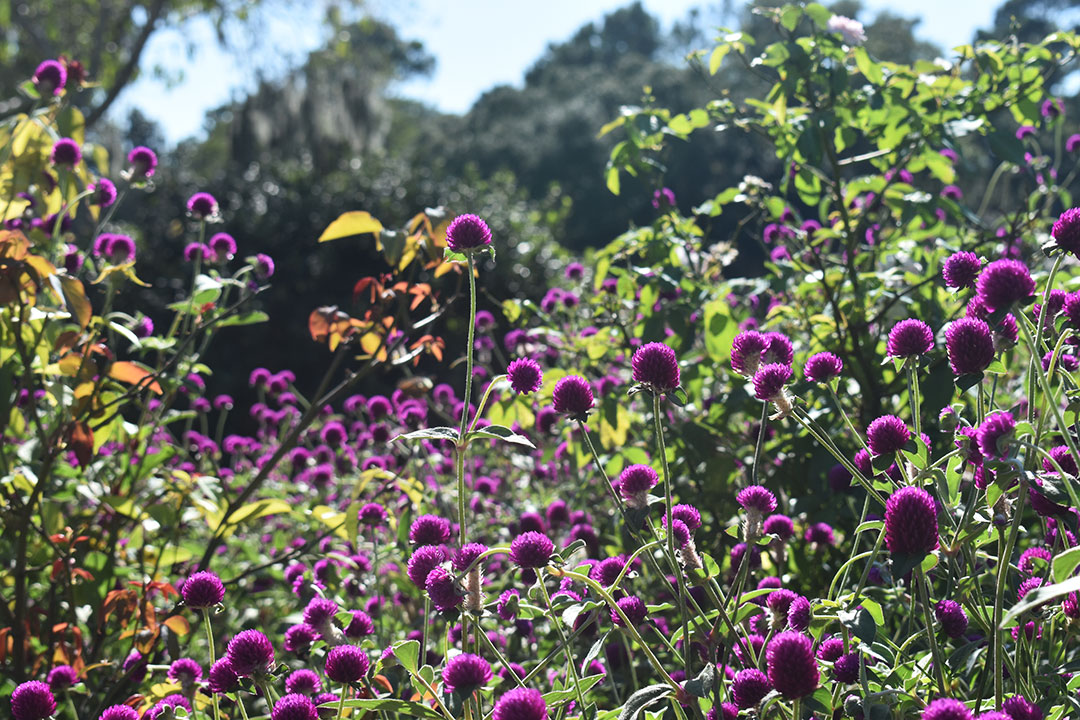 The gardens are filled with roses, azaleas, and many other types of flowers.
The gardens are filled with roses, azaleas, and many other types of flowers.
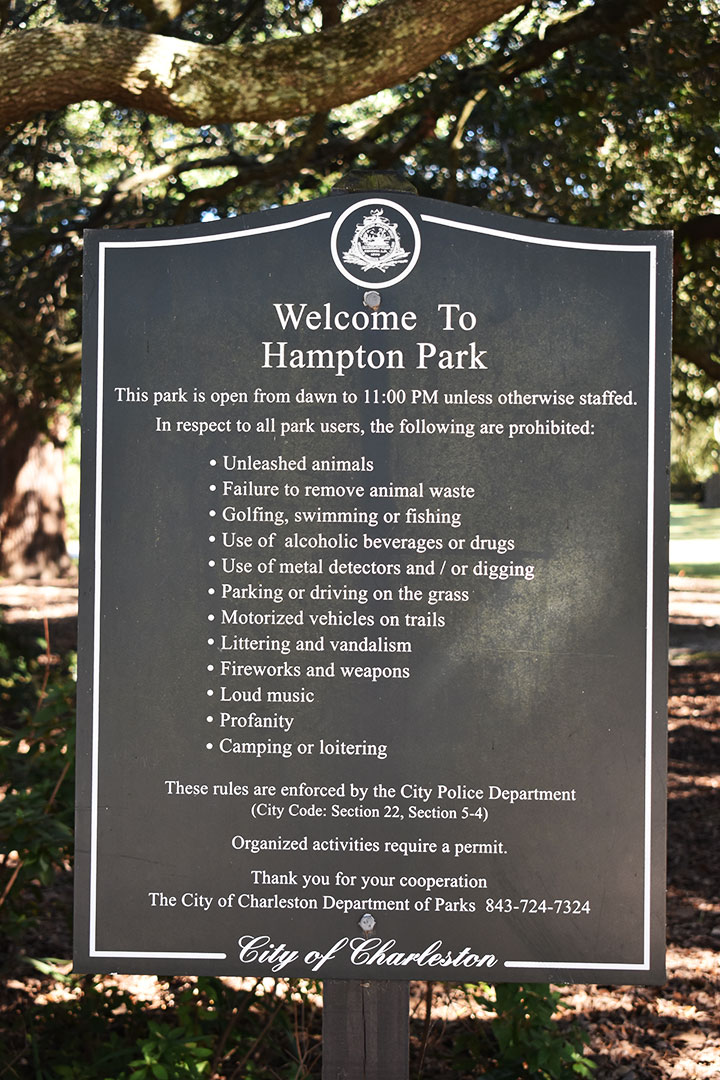 Park staff was present and doing rounds through the park.
Park staff was present and doing rounds through the park.
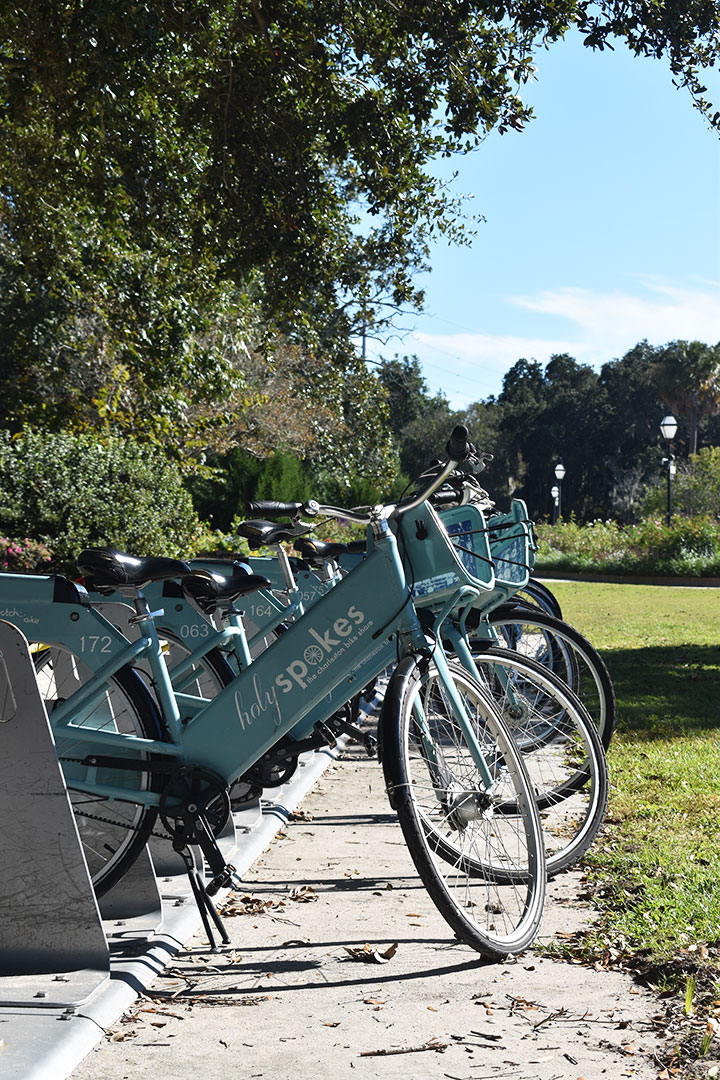 If walking is not for you, bikes are available at the park to rent. Hampton Park is located at 30 Mary Murray Dr. in Charleston.
If walking is not for you, bikes are available at the park to rent. Hampton Park is located at 30 Mary Murray Dr. in Charleston.
Busted Plug Plaza and Tunnelvision

The world’s largest fire hydrant happens to call Columbia, South Carolina, home. Named “Busted Plug Plaza,” the tilted fire hydrant is 40 feet tall and weighs about 675,000 pounds. When it first was unveiled in 2001, it had a water fountain at its base to make it look like it had been hit. However, the pumps later failed and now there is no water. The fire hydrant was built to be strong enough to withstand a direct hit from a tornado. The fire hydrant was created by artist Blue Sky, who is famous for his mural “Tunnelvision,” located on the same block as the fire hydrant. It took a year for Big Sky to paint the 50 by 75 foot optical illusion mural. These two attractions are great to visit at any time, but I would suggest not going during rush hour as you will have to park in the metered parking to walk around and deal with traffic in downtown Columbia.
 Both the fire hydrant and the mural can be found at 1500 Marion St. in Columbia, South Carolina.
Both the fire hydrant and the mural can be found at 1500 Marion St. in Columbia, South Carolina.
These spots aren’t the only lesser known places in South Carolina that are worth the detour.
Here are some others:
Poinsett Bridge: One of the oldest bridges in the Southeast
Pearl Fryer Gardens: A unique 3-acre topiary garden
Campbell’s Covered Bridge: The only remaining covered bridge in South Carolina
Old Sheldon Church Ruins: Ruins of a 250-year-old Greek revival style church
Yellow Branch Falls: A hiking trail that leads to a beautiful 50-foot waterfall
And if you’re willing to pay a small fee to visit, you should add these two places to your list:
Magnolia Plantation: One of the oldest plantations in the south
Cypress Gardens Park: A 170 acre swamp garden, you might recognize it from The Notebook’s boat scene.


